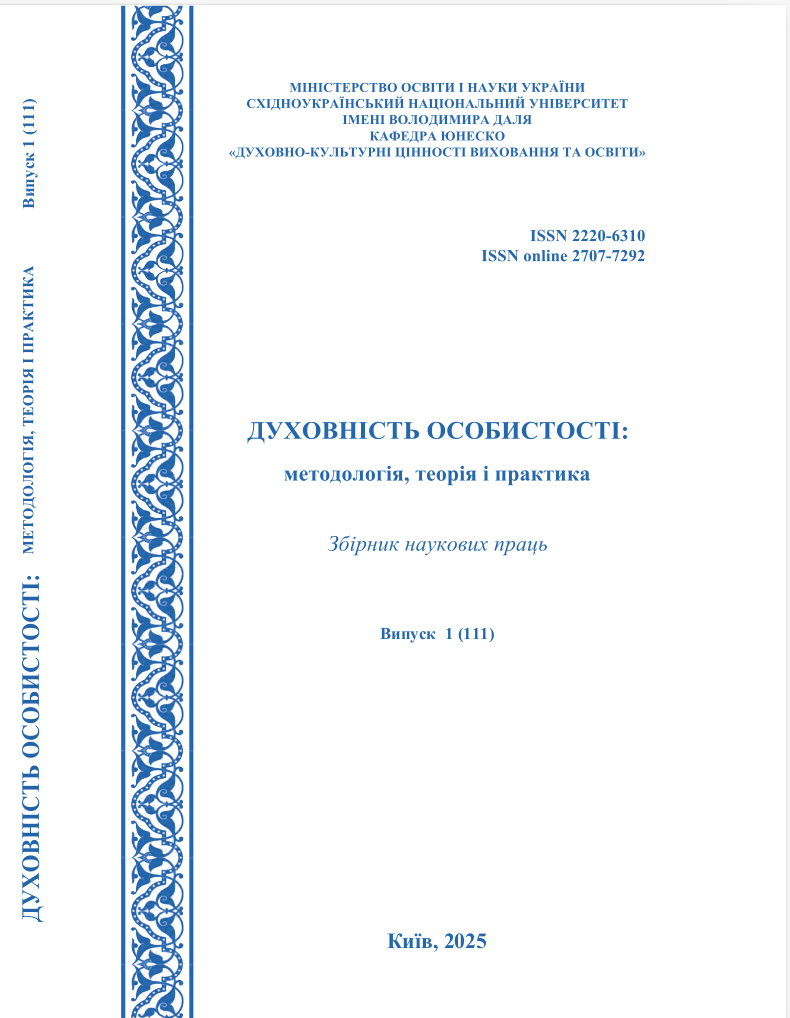«The Hero’s path» as a model of spiritual self-knowledgement of the person
DOI:
https://doi.org/10.33216/2220-6310/2025-111-1-184-194Keywords:
monomyth, archetype, hero, Hero’s Path model, spiritual self-knowledge, self-awareness, self-coaching, personality transformationAbstract
The article presents the hero’s journey, described by Joseph Campbell in his work «The Hero with a Thousand Faces», as a universal model that reflects the process of spiritual self-discovery and personality transformation. The model is based on archetypes, analysis of myths, legends and religious traditions of different cultures, where the hero goes through a series of stages that lead him to a deeper understanding of himself, the disclosure of his potential. The spiritual dimension of the model is that the hero’s journey is not only an external adventure, but also an internal process through which a person goes through to realize and reveal their true nature. It illustrates the stages of struggle with fears, selfishness, illusions and limitations, which ultimately leads to harmony with oneself and the world.
The main stages of the hero’s journey are examined, their characteristics are given, and questions for self-coaching are suggested that will help to more deeply understand and more effectively pass the main milestones of self-transformation. It is shown that the «Hero’s Path» model can become a powerful tool for the spiritual and moral education of the younger generation, as it stimulates self-knowledge and self-awareness of a young person who goes through their own path of growing up, which includes stages similar to the milestones of a hero’s journey. The model provides a clear and engaging metaphor for inner growth; teaches us to recognize difficulties as opportunities for spiritual growth; helps us see our own life as a meaningful story; and promotes the formation of moral stability and responsibility.
The idea that working with the monomyth model «The Hero’s Path» actualizes the value of heroism; promotes the development of social and emotional skills of children and youth; encourages people to seek meaning in everyday life, set goals and go towards them, overcoming challenges; encourages them to be useful to others, understanding their place in society. Various types of activities for pupils and students based on the Hero’s Path model are proposed, which can be applied in the educational process.

